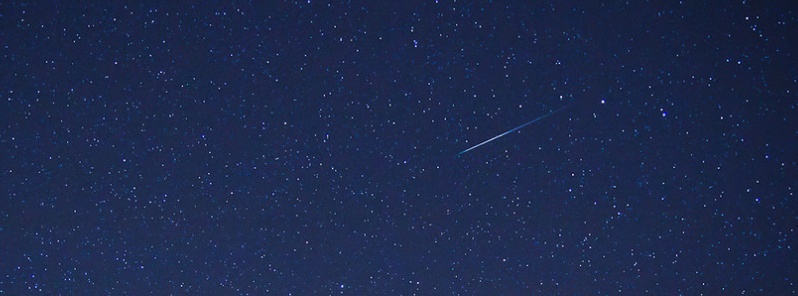2020 Quadrantid Meteor Shower peaks around 08:00 UTC on January 4

Quadrantid Meteor Shower is predicted to peak at around 08:20 UTC on January 4, 2020, favoring observers in North America. The first-quarter moon will set shortly after midnight, leaving fairly dark skies for what could be, weather permitting, a good show this year. Normally, this shower produces up to 40 meteors per hour, with up to 100 on occasions.
Although Quadrantids are fainter and easier to miss than Geminids or Orionids, this is a major meteor shower, capable of producing amazing fireballs with long tails if the skies are dark enough.
Quadrantids are very difficult to observe due to short-lived peak (4 – 6 hours) and are easily missed if the observer is located outside of the main observing window or just a few hours of poor weather, the International Meteor Organization noted in their 2020 Meteor Shower Calendar.
Additional complexity comes from the mass-sorting of particles across the meteoroid stream which is related to the minor planet 2003 EH1 and to comet 96P/Machholz.
According to IMO, the shower is expected to peak near 08:20 UTC (03:20 EST, 02:20 CST, 01:20 MST, 12:20 PST).
Depending on the observer’s latitude, the radiant attains a useful elevation around or after local midnight and culminates close to dawn.
The estimated peak timing is favorable for the western Atlantic region and eastern North America, AMS' Robert Lunsford said.
In western North America the radiant will be low in the northeastern sky and rates will be reduced. All potential observers in North America should start viewing an hour before these times just in case the peak occurs early.
European observers should expect a continuous increase of the rates into dawn.
Luckily the 60% illuminated waxing moon will set near 01:00 local standard time and will not be a factor except near the west coast of North America.
Due to the high northerly declination (celestial latitude) these meteors are not well seen from the southern hemisphere.
The shower is thought to be produced by dust grains left behind by an extinct comet known as 2003 EH1, which was discovered in 2003.
Meteors from this shower were first noted in 1825.
Featured image credit: Donovan Shortey

Commenting rules and guidelines
We value the thoughts and opinions of our readers and welcome healthy discussions on our website. In order to maintain a respectful and positive community, we ask that all commenters follow these rules:
We reserve the right to remove any comments that violate these rules. By commenting on our website, you agree to abide by these guidelines. Thank you for helping to create a positive and welcoming environment for all.